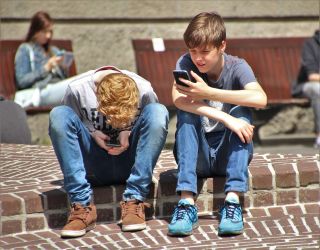Teachers across the country have become Instagram famous. Unfortunately, one such teacher has also experienced AI cyberbullying. The instance occurred when a student used AI to replicate his image and then posted inappropriate social messages using that image to look like the posts came from the teacher. The teacher identified the fraudulent posts and alerted administrators before the posts were widely viewed. The administrator determined who the student was, and the student was disciplined.
This unfortunate use of generative AI can pose serious challenges, especially around cyberbullying. When we typically think of cyberbullying, we think of people posting harmful content targeting specific individuals. Until generative AI became more mainstream, we rarely considered whether or not the bully was an actual person. Of course, behind the AI is a person using the AI generative software, but that creates another level of separation, making it even harder to determine who the perpetrator is.
AI and Cyberbullying
Algorithms are used in various platforms to automate the monitoring of online forums and other web-based locations where bullies intimidate their victims. Australian and Ireland legislation has been passed to increase the scrutiny of monitoring online behaviors to reduce cyberbullying. Monitoring such behavior can be challenging, especially when the bully is a child. For example, one instance of bullying occurs when girls, usually teens, take pictures to post on Instagram, and when they post them, they tag girls who are not included in their friend group to taunt or intimidate them. This behavior is complicated to monitor and devastating to its target.
AI has been a tool for bullying for years, and in 2019, Time published an article about Instagram’s war on bullying by utilizing sophisticated monitoring tools and human moderators to reduce fake news and accounts used to target individuals as a form of cyberbullying. The head of public policy for Instagram noted teens are exceptionally creative, and generative AI gives them even more tools to become creative bullies.
Cyberbullying.org collects stories from people who want to share their cyberbullying experiences, and many of the stories are related to imposter posts. The site also notes that previously bullies had to spend time to create their hate messages, but generative AI expedites that process and can welcome others to engage in these harmful activities.
Using AI and Other Strategies to Prevent Cyberbullying
The good news is that generative AI is also used to flag unnatural behavior patterns online, including how frequently content is posted or if sentiments are repeated. Advances are needed to tag or mark images created using generative AI software and then posted on social media. These advances include being embedded with metadata storing those variables or stored on a secure data ledger system.
In addition to these strategies, platforms need to improve their ability to detect harassment and other forms of bullying. Verifying genuine users is another attempt to reduce the number of accounts used for this crime.
Ultimately, there is no replacement for humans being in the loop. Intentional monitoring of student online activity and awareness of student relationships when they are in person on campus can undoubtedly have a positive impact. Putting policies and practices in place now around generative AI, especially concerning bullying behavior, is a necessary action this school year.


